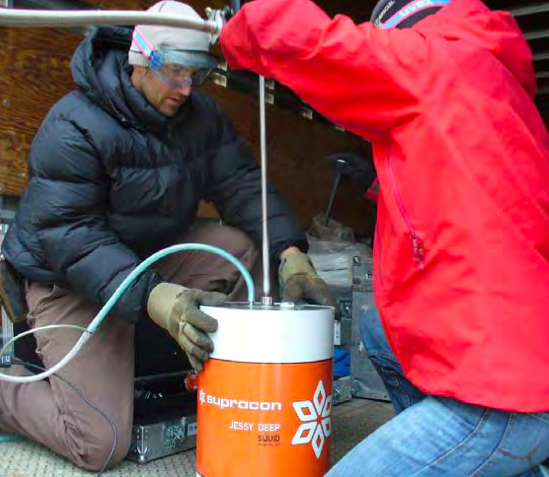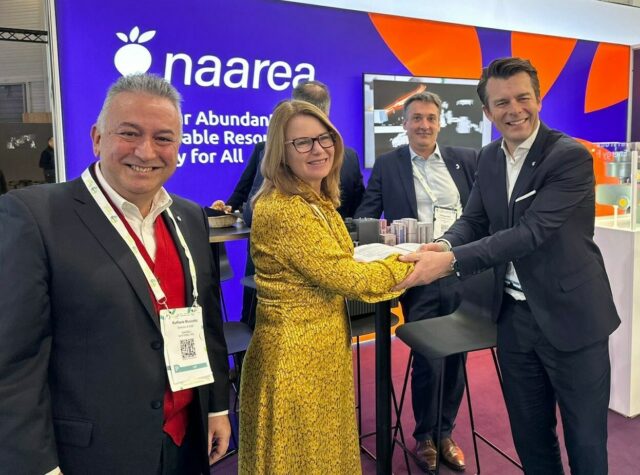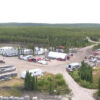Stallion Uranium Corp. (TSX-V: STUD) (OTCQB: STLNF) mobilized crews to conduct an expansive electromagnetic (EM) survey at its Coffer project in Saskatchewan’s section of the Athabasca Basin. The company received an exploration permit for the 38,875-hectare site last week.
Stallion said Thursday that the new survey prioritizing the project’s Appaloosa target will utilize superconducting quantum interference device (SQUID) technology.
More specifically, Saskatoon’s Dias Geophysical, the survey company Stallion has employed, will use a low-temp liquid helium cooled device called the Jessy Deep SQUID. Dias says the SQUID sensor system took 20 years of testing to develop and that it measures EM fields with an unrivaled level of sensitivity.
Stallion says the target has coincident geophysical anomalies with magnetic low and gravity low signatures, indicating strong potential for high-grade uranium mineralization.
“The Athabasca Basin is renowned for its uranium endowment and we believe that this survey is an invaluable step in our ability to best determine the highest-potential drill targets, greatly enhancing the company’s potential of making a discovery,” Darren Slugoski, Stallion’s Vice President of Exploration in Canada, said.
Stallion’s time-domain EM geophysical survey will be ground-based/on foot. Dias also uses SQUID technology for helicopter-borne surveys.

Workers load the Jessy Deep SQUID device with liquid helium. Photo via Discovery International Geophysics, a subsidiary of Dias Geophysical
Read more: ATHA Energy to acquire Latitude Uranium and 92 Energy, creating industry’s largest uranium portfolio
Read more: ATHA Energy increases private placement offering up to $22.84M
Nuclear reactor innovation at an all-time high
Stallion and ATHA Energy Corp. (CSE: SASK) (FRA: X5U) (OTCQB: SASKF) are actively engaged in a joint venture. The companies hold a substantial portion of land together.
ATHA is positioned to become a leading influence in the Athabasca Basin and Canada overall. The company recently announced its acquisition of Latitude Uranium Inc. (CSE: LUR) (OTCQB: LURAF) and 92 Energy Limited (ASX: 92E) (OTCQX: NTELF). The merger will result in a dominant Canadian exploration company with 7.1 million acres of uranium exploration territory in Saskatchewan, Nunavut and Labrador.
An increasing rate of nuclear reactor construction combined with a supply shortage and decarbonization goals has caused the price of uranium to hit a 15-year high. It is currently worth over US$80 per pound and is expected to continue to appreciate.
At the COP28 climate change conference in the United Arab Emirates, 22 countries just signed an agreement to triple their nuclear power capacity by 2050.
Currently, about 60 nuclear reactors are under construction throughout the world and several new varieties of the power generating units are being developed. The major multi-faceted company Jacobs Solutions Inc (NYSE: J) just announced a new collaboration with the French startup Naarea to develop a micro reactor powered by spent nuclear fuel.

Representatives from Jacobs and Naarea sign the collaboration contract at the World Nuclear Exhibition in Paris. Photo via Jacobs Solutions
In the United States, the country’s Nuclear Regulatory Commission just provided Kairos Power with a construction permit for its new Hermes power unit. The company says it’s the first non-water-cooled reactor to be approved for construction in the U.S. in over 50 years.
Montreal’s major engineering company AtkinsRéalis (TSX: ATRL) unveiled its most advanced reactor technology to date. The reveal happened at last month’s World Nuclear Exhibition in France.
Ontario Power Generation recently selected four fuel suppliers for North America’s first small modular reactor as well.
ATHA Energy is a sponsor of Mugglehead news coverage
rowan@mugglehead.com














